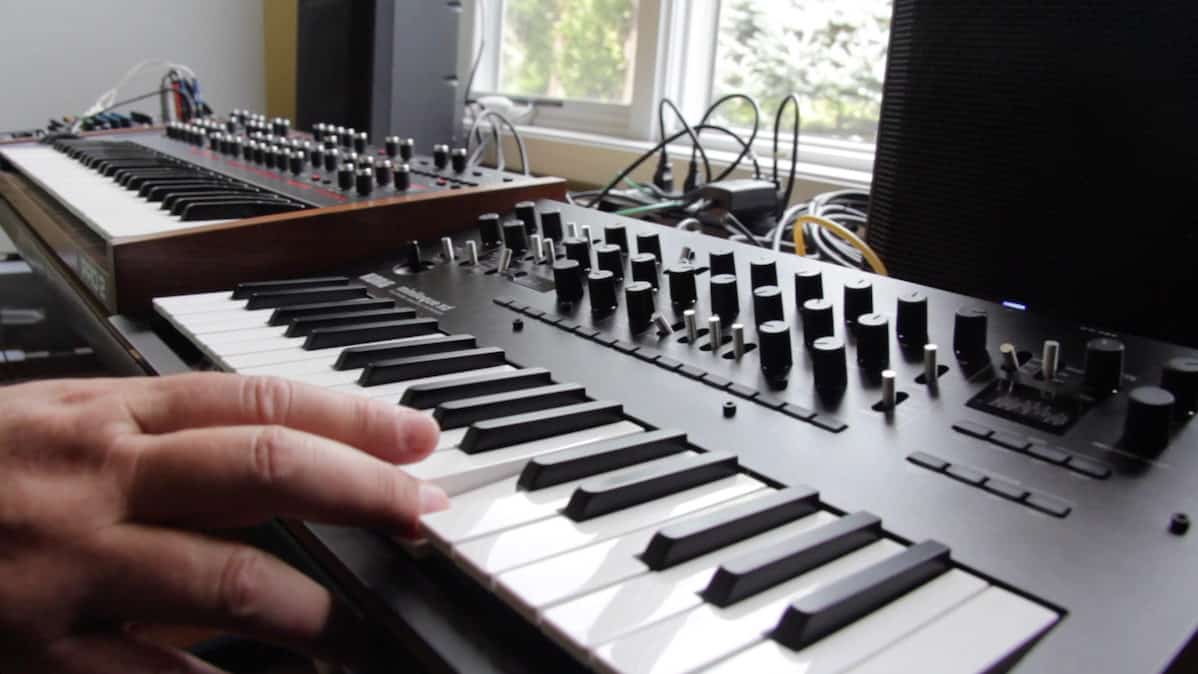Analog
Korg Minilogue XD for Non-beginners: Control Voltage Applications

Our resident experimental synthesist, Chris Stack, investigates a popular synthesizer’s control-voltage connectivity.
I recently bought a Korg Minilogue XD and was pleasantly surprised to discover just how deep it is. Much of that depth comes from its two assignable control voltage inputs. In CV/Gate mode, the jacks act as standard pitch and gate inputs. In Modulation mode, you can assign them to any of 29 parameters. The current list ranges from parameters like gate time, portamento, and voice mode depth to oscillator, envelope, and effects settings.
This versatility makes the Minilogue XD a perfect addition to my personal studio. Most of my synthesizers are analog, with a healthy complement of CV functionality. The XD is perfectly at home with gear like my Moog Voyager (with VX-351 CV Out Expander), Slim Phatty, Mother-32, MP-201 Multi-Pedal, CP-251 Control Voltage Processor, and a bunch of Moogerfoogers; Arturia MatrixBrute, MiniBrute 2s, and MicroBrute; Make Noise Ø-Coast; and Dave Smith Instruments Pro 2.
Because the Pro 2 has an onboard sequencer and a very powerful and flexible CV implementation, I thought it would be a great synth to pair with the XD for this relatively short set of examples. I may have more to come with the other gear in the future.
Ever since I first heard a sample-and-hold LFO modulate filter cutoff on a Polymoog back in the day, I’ve been a fan of S&H and step-sequenced filters, especially when they’re synced to the master clock and the audio is routed through clock-synced effects.
With its built-in BPM effects, the Minilogue XD makes this kind of synchronization easy. I’ve touched on filter cutoff sequencing a bit in this video but tried to focus on other, less common, modulation destinations. Cross Mod and Multi Shape were particularly fun to control, but I still have a lot more exploring to do.
-
Features4 weeks ago
UPDATE: Mac Users: Sonoma 14.4.1 Reportedly Fixes Problems for Musicians
-
Events4 weeks ago
The Haken Continuum And The Dune Part Two Connection
-
In This Issue3 weeks ago
Native Instruments Kontakt 7 Is Now Compatible With macOS Sonoma
-
Digital4 weeks ago
Glass Orchestra Sample Library for UVI Workstation and Falcon – the Synth and Software Review















